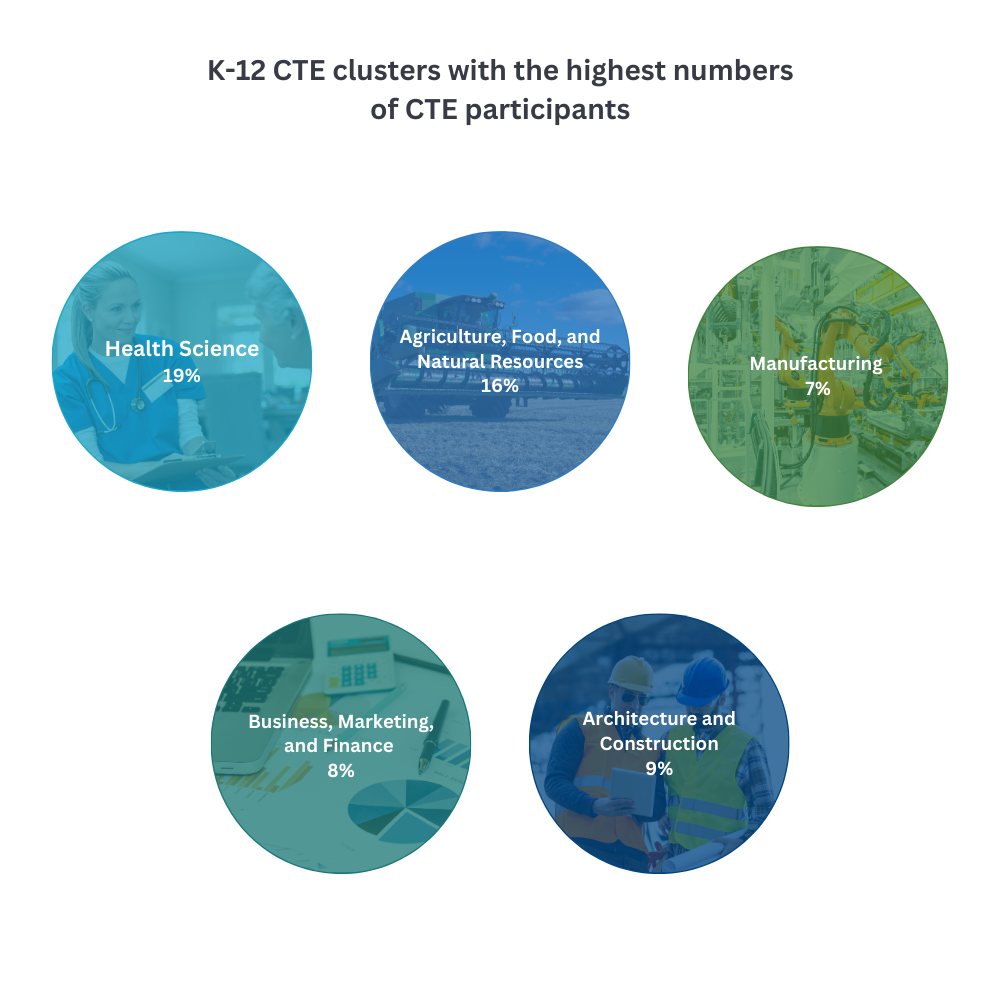Home »
Using Data to Understand Mississippi’s Workforce Landscape
03/15/2024
As Mississippi’s office for workforce development strategy and coordination, we forge connections with key providers of workforce training and employment opportunities to enhance the lives of all Mississippians. Recognizing the diverse landscape, we continuously navigate toward tailored solutions.
In response to Mississippi House Bill 1388, enacted in March 2022, a baseline analysis was mandated for K-12 students in Career Technical Education (CTE) clusters and workforce outcomes for those completing CTE programs in public community colleges. Data analytics is pivotal in shaping an effective workforce plan and fostering collaboration among community partners and policymakers to guide students successfully beyond high school.
K-12 Snapshot:
Approximately 27,000 students engage in K-12 CTE programs annually. Despite a slight 0.9% dip in participants, concentrators remained stable.
More students graduated with CTE dual credit in AY 2021 than in AY 2017. Approximately 50% (4,106) of K-12 CTE concentrators enrolled in Mississippi community colleges, with 66% (2,709) staying on for a second academic year. Furthermore, 8% pursued higher education at public universities. About 37% (3,051) of K-12 CTE concentrators skipped postsecondary education, opting for direct entry into the workforce. About 66% (2,022) were employed within a year of graduation, with 24% (477) securing jobs aligned with their K-12 CTE cluster.


Community College Landscape:
Each year, about 20,000 students joined technical education programs, but there was a 5% drop overall. This was mostly because Career/Technical Certificate programs fell by 27%, while Associate of Applied Science (AAS) degrees went up by 5%. On average, 7,901 students graduated yearly, with 4,233 getting AAS degrees and 3,667 getting Career/Technical Certificates. But there was an 11% drop in overall graduates, with AAS and Certificate program graduates decreasing by 11% and 10%, respectively. Out of about 7,400 graduates not enrolling in public universities, roughly 66% (4,900) found jobs within a year, with 35% working in aligned fields, earning $32,422 in their first year.
Analysis Takeaway
Following the analysis, the State Workforce Investment Board (SWIB) has devised several strategic measures to bolster activity in specific domains and reallocate resources for greater effectiveness.
Firstly, SWIB seeks to elevate K-12 graduation rates for all accredited credentials, setting a target of at least 65% by FY26. This targeted enhancement could potentially yield approximately 1,900 additional credentials obtained by high school students.
Additionally, SWIB also recommends a minimum class size of 10 students for K-12 courses in priority sectors, along with the introduction of initiatives to enhance enrollment and retention among underrepresented groups in community college programs, with a specific focus on black male students.
These measures collectively aim to enhance student achievement, foster workforce preparedness, and improve employment outcomes in sector-specific domains across Mississippi’s educational and training frameworks.
These analyses and responses delve into critical aspects of Mississippi’s education landscape, offering a comprehensive understanding of successes and areas for improvement. The findings highlight gaps and challenges, necessitating attention from diverse stakeholders. As a strategic guide, these analyses empower decision-makers to fortify the state’s CTE programs and establish meaningful pathways for students.
